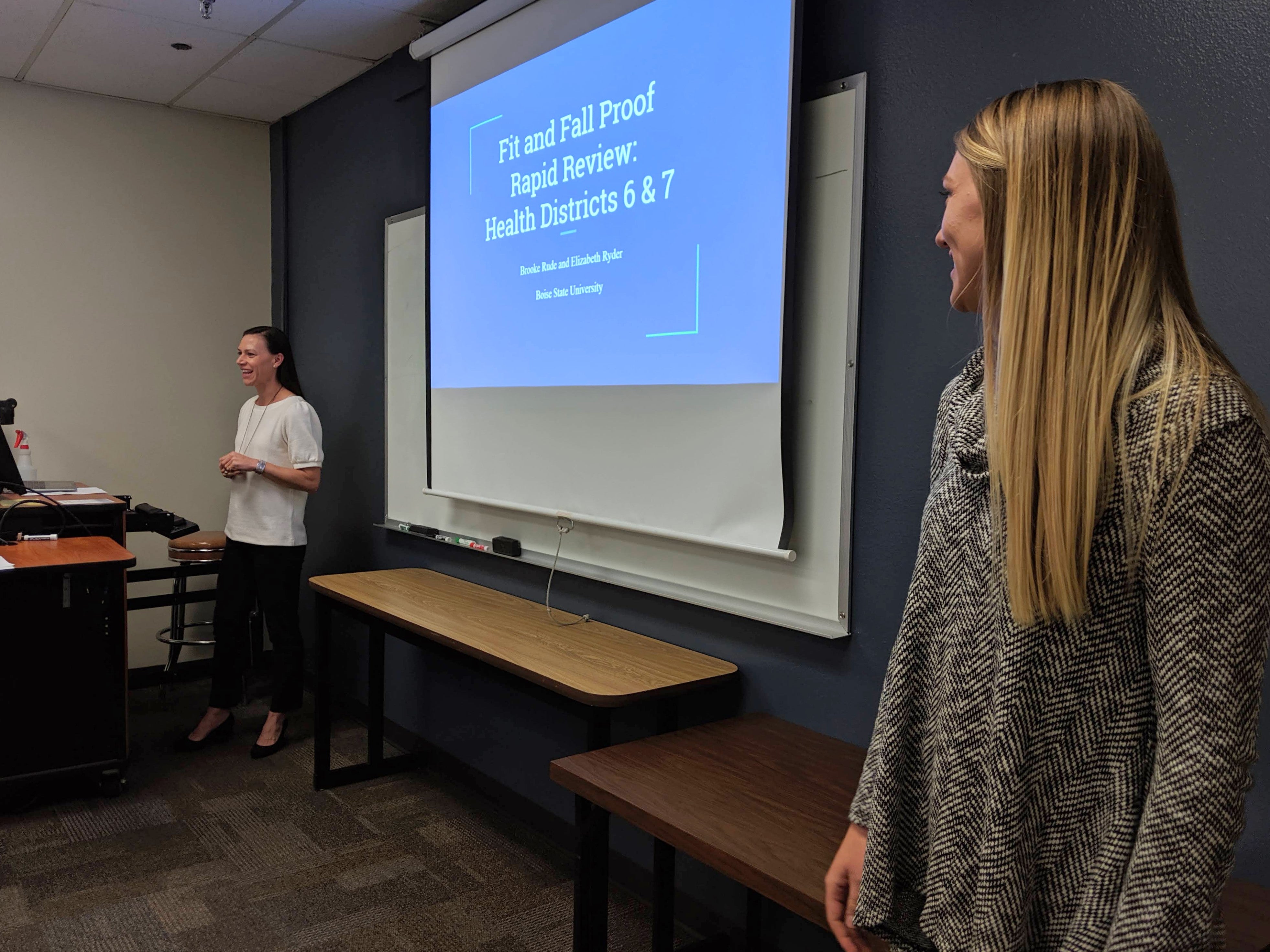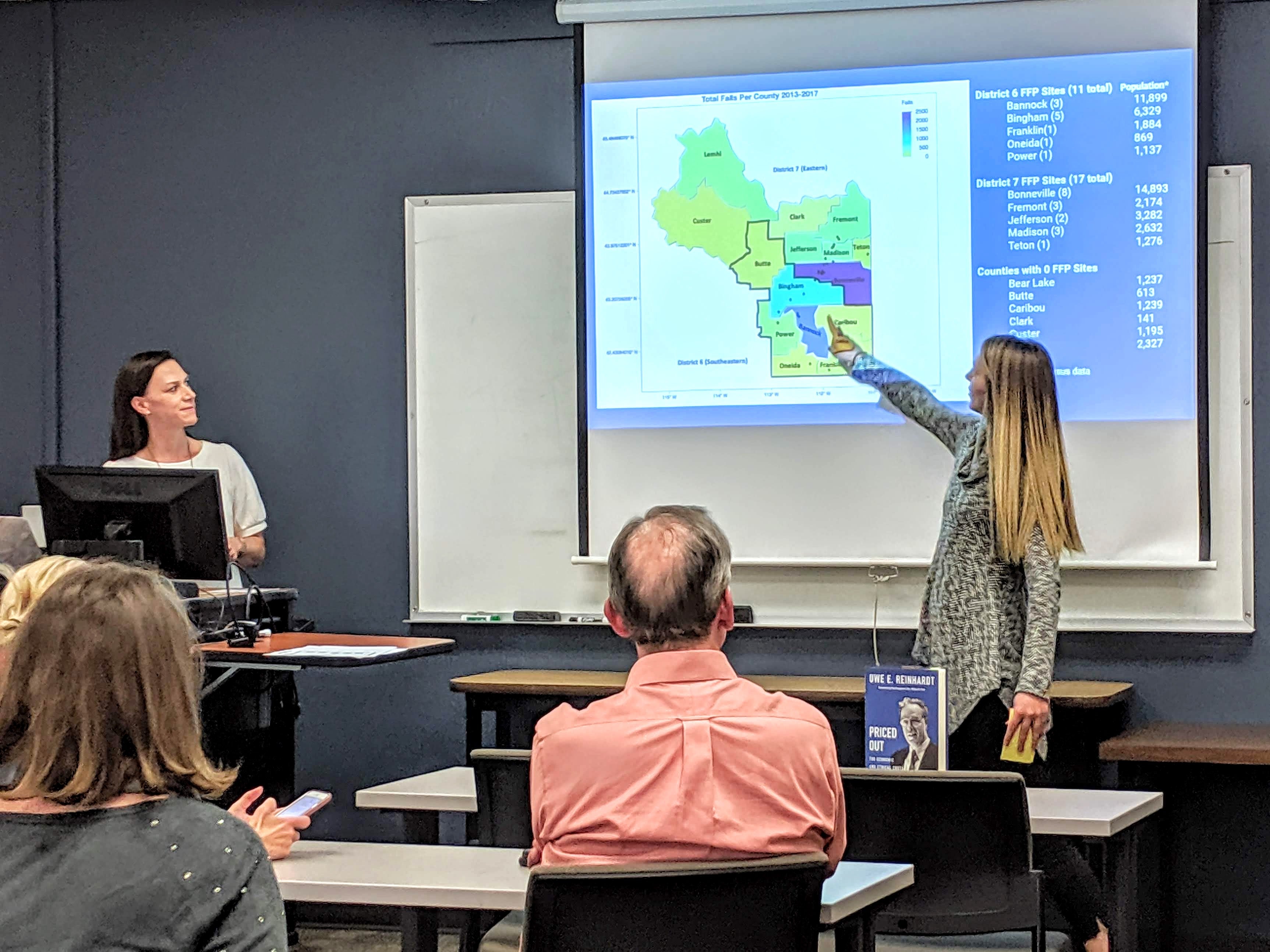
When Health Sciences masters students presented their research to stakeholders from the Bureau of Emergency Medical Services and Preparedness and the Idaho Department of Health and Welfare, they not only informed public health decision-making – they shed light on a complex story.
The students were charged with a 7-week capstone project to combine different data on a public health risk (falling) with a community asset (a fall prevention program, Fit and Fall Proof™). To do so they scoured Emergency Medical Services reports from 2013 – 2017 and identified hotspots of falling incidents across a detailed map of Idaho. Using specialized statistics software and records from the Idaho Department of Health and Welfare over the same time period they added in district-level information about the location of Fit and Fall Proof™program classes.

The result was a trove of new information, not only identifying trends among the falling victims, such as age and gender, but also telling a more complete story about how well fall-prevention services are reaching the most at-risk populations in Idaho.
After presenting their findings and recommendations, the students engaged the community stakeholders in a roundtable discussion. Together they contemplated the key takeaways from the data. They also discussed challenges such as how to prevent falls where they occur most often – in the home – and how to increase services in the more isolated and rural communities.
“The students have done some remarkable work [on this project],” said Professor Sarah Toevs. “Visual stories of trends, such as regions where falls are more concentrated but are lacking in preventive services, were illuminated through the students’ efforts and the expertise of Dr. Ketelsen.” Toevs and Clinical Professor Kirk Ketelsen co-facilitated the project to incorporate the latter’s academic specialties in data visualization and statistics.
Going forward, Toevs says the methods for gathering and analyzing data from this course will be used in a number of classes in the Master of Health Science program. “The ability to share information and to tell a story in a succinct and clear manner is essential in public health.”
-By Lizzy Miskell